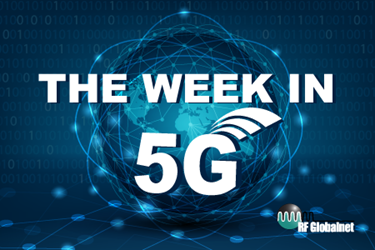The Week in 5G: 10/14/21 — FCC Asked To Open 12GHz Ahead Of $1T Infrastructure Bill, mmWave Tech Advances 5G

By Abby Proch, former editor

The 5Gfor12GHz Coalition is petitioning the FCC to open 500 MHz of the 12GHz band for two-way terrestrial 5G without a new auction. The Coalition made its Oct. 7 request as Congress prepares to advance a $1 trillion Bipartisan Infrastructure Bill so that funds, if approved, can be readily used to improve accessible, high-speed internet service for underserved Americans. Some notable Coalition members include DISH Network, Federated Wireless, the Center for Rural Strategies, and the Rural Wireless Association.
In automotive news, Movandi claims it has successfully boosted in-car 5G mmWave connectivity and data speeds with its smart repeater and cloud software. According to a release from businesswire, the team mounted its BeamXR mmWave repeater behind the windshield of a car and connected to Verizon’s 28-GHz Ultra Wideband network while moving at speeds up to 28 MPH over a busy 3-mile stretch of a California street. During the drive, downlink and uplink speeds registered 19x the national average and 14x the speeds when tested without the repeater, even maintaining video calls and the like without interruption.
Also in mmWave advances, Nokia announces it can now boost fixed wireless access (FWA) with 5G mmWave using its 360 High Gain technology to overcome propagation issues that typically plague higher radio frequencies. The telecom’s novel tech amplifies available signals and finds the strongest connection by assessing its environment, picking up direct and reflected signals from any direction, according to a company press release. It’s been tested and validated in research labs, and trials in urban environments are ongoing. Deployments are expected to start with subscribers in urban areas beginning in 2023.
In rollout news, AT&T has secured a 5-year deal with Ericsson to support the deployment of its 5G Standalone (SA) network, according to an Ericsson press release. Included in the agreement is Ericsson’s Advanced Antenna System, Advanced RAN Coordination, and Carrier Aggregation technologies. Not only will the collaboration allow AT&T to bring 5G to consumers and businesses, but it will also extend services to first responders and more niche use cases such as sports and entertainment venues, according to the report. The deployment will also support anticipated developments in Cloud RAN. AT&T and Ericsson have collaborated on various projects and services over the past 20 years, most recently entering a $8.3 billion contract for 5G services in July. According to the press release, this partnership will support AT&T’s goal of connecting 70-75 million people with 5G by the end of 2022 and reaching 200 million by the end of 2023.
In Germany, Telefónica Deutschland is on pace to provide complete 5G coverage to all of Germany by the end of 2025, according to a report by ICT-NN. Telefónica expects to cover 30% of the population by the end of this year and 50% by the end of next year. The total investment of about $4.6 million (roughly 4 billion euros) will be spent on the 3.6 GHz spectrum. Telefónica is installing and activating about 180 5G antennas each week, topping 3,000 to date, and hopes to build an additional 5,000 by the end of 2021.
As the deployment of 5G picks up momentum, industry experts are eyeing key areas that could most benefit from the lower latency and faster data rates. In a white paper by 5G Americas, a consortium of experts in LTE and 5G identifies opportunities for major growth in manufacturing, mining, utilities, healthcare, education, and gaming. As an example, use cases in healthcare include asset tracking, device connectivity for data entry, remote surgery, and automated collection of patient health data, among others. In mining, 5G advancements could also enable more worker wearables and environmental sensors, improve connectivity and communications in challenging terrain and underground environments, and bring automation to more systems and processes.
In not-quite-5G news, Mexico’s 4G spectrum auction attracted just two bidders: AT&T Mexico and Telcel. According to Developing Telecoms, the two bids combined for $65.6 million (MXN 1.35 billion), with AT&T securing 800MHz spectrum and Telcel grabbing a block of 2.5GHz. All the 1700MHz/2100MHz AWS and 1900MHz PCS frequencies went unsold. According to the report, artificially high reserve prices were the reason for lackluster participation. A much more anticipated spectrum auction for 600MHz and 3.5GHz bands, which support 5G, has not yet been scheduled.
And finally, in Russia, officials expect 3G to be phased out by 2025, also according to Developing Telecoms. Russian media has reported that the country will divest in 3G starting in areas with low subscriber density. The campaign will begin in 2023.
